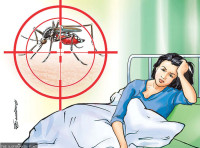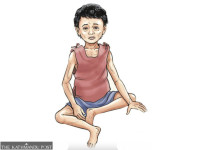Health
1 in 5 people above 15 suffer from hypertension: Report
Study shows 48 percent women and 52 percent men aged 15 and older in Nepal are unaware of the condition.
Arjun Poudel
More than 20 percent of the country’s population above 15 years suffers from high blood pressure, according to the Nepal Demographic and Health Survey-2022 carried out by the Ministry of Health and Population.
High blood pressure or hypertension is a condition of the blood pressure staying elevated over time. It is an established risk factor for ischemic heart disease, stroke, and kidney diseases.
The final report of the nationwide study carried out between January 5 and June 22 last year with technical and financial support from the United States Agency for International Development shows that 18 percent of women and 23 percent of men above the age of 15 are suffering from high blood pressure.
The figure was almost the same in 2016 and 2020 (17 percent women and 23 percent men).
The study shows that 18 percent of the women residing in cities and 17 percent women living in villages were found to be suffering from high blood pressure. However, there’s a huge gap between male population in the city with the condition (25 percent) and those in the villages (18 percent).
Koshi Province has the highest percentage of people with hypertension—27 percent male and 25 percent female. In Karnali, 18 percent men and 12 percent women have the condition, the lowest in the country.
Problems of high blood pressure have been found to rise in proportion to age, the study showed. The prevalence of hypertension is consistently higher among men than women until ages 55–59, after which the condition among women generally exceeds that of men.
The prevalence of hypertension is twice as high among men aged 35–39 (25 percent) as compared to women the same age (13 percent).
Among individuals aged 60 years and older, 46 percent of women and 42 percent of men have hypertension. Fifty-two percent of women and 45 percent male population above 65 years of age have high blood pressure.
“Of those who have been suffering from high blood pressure, only 19 percent of women and 17 percent of men have their blood pressure under control,” the report said.
The study showed that 48 percent of women and 52 percent of men aged 15 and older with hypertension are unaware of their high blood pressure.
Nineteen percent of women and 16 percent of men are aware of their condition and have been taking prescribed medication and have their blood pressure controlled.
However, 16 percent of women and 12 percent of men are aware of their condition and taking prescribed medication, but do not have high blood pressure control.
Seventeen percent of women and 20 percent of men are aware of their condition but have not been treated.
Hypertension levels are higher among overweight/obese adults (36 percent) than among those who are thin or are of normal weight (14 percent). Among men, the prevalence ranges from 13 percent among thin men to 49 per cent among obese men.
Compliance with prescribed treatment in the elderly population (those above 60 years) is higher in both males and females (63 percent) than those aged between 15 to 59 (38 percent female and 33 percent male). People residing in urban areas (52 percent women and 49 percent men) are more compliant with treatment than their rural counterparts—36 percent and 31 percent, respectively.
For the blood pressure measurement, a total of 10,622 people (6,021 women and 4,601 men) were selected. Among these individuals, 96 percent of the women and 92 percent of the men had their blood pressure measured.
Meanwhile, experts say, along with carrying out studies on risk factors on a regular basis, authorities concerned should also focus on the behavioural changes in the public.
“People have become more aware of their health conditions compared to the past and have also changed their behaviour,” said Dr Om Murti Anil, an interventional cardiologist. “Still, a lot of people are not taking medications and bringing changes to their lifestyle. Awareness plays an important role in bringing about behavioural changes.”




 8.12°C Kathmandu
8.12°C Kathmandu














